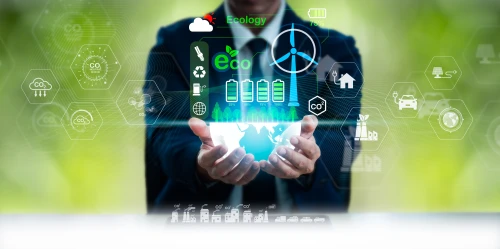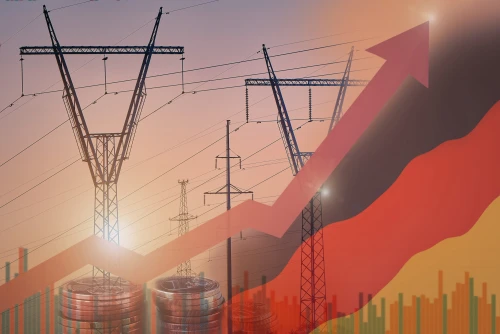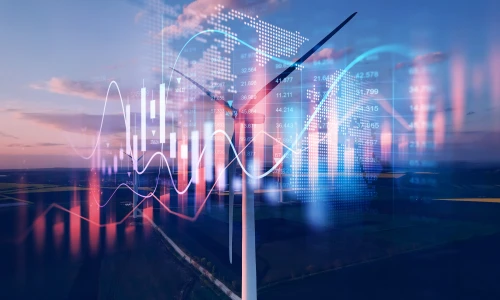
April 25th, 2025
Join our Italian Energy Day on 20 May – Book now
Life cycle assessments help uncover the true environmental impact of renewables like solar and wind—beyond just zero-emission energy production.

As the world transitions toward cleaner energy sources, renewable technologies like solar panels, wind turbines, and bioenergy systems are often celebrated for their low or zero operational emissions. But while these sources produce far fewer emissions than fossil fuels during use, it’s essential to look at their entire environmental footprint—from raw material extraction to manufacturing, operation, and end-of-life disposal.
This is where life cycle assessments (LCAs) come in. LCAs offer a full-picture view of the environmental impacts of a product or process across its entire lifespan. For renewable energy, LCAs are key to understanding the real sustainability of technologies we rely on for a greener future.
A life cycle assessment, also known as a cradle-to-grave analysis, is a method used to evaluate the environmental impacts associated with all stages of a product’s life. This includes:
Raw material extraction (mining, harvesting, etc.)
Manufacturing and construction
Transport and installation
Operation and maintenance
End-of-life (decommissioning, recycling, or disposal)
In some cases, partial assessments—like cradle-to-gate (ending at the factory gate before the product is used)—are used when full data isn’t available.
LCAs typically focus on multiple impact categories, such as:
Greenhouse gas (GHG) emissions (measured in CO₂-equivalents)
Energy use
Water consumption
Resource depletion
Pollution and toxic releases
By using LCA, we can compare technologies more fairly and ensure that decisions are based on data, not assumptions.
It’s a common myth that renewable energy technologies have zero environmental impact. While they are much cleaner than fossil fuels during operation, they do require significant materials, energy, and infrastructure to build and maintain. LCAs help reveal these hidden impacts and ensure a more realistic evaluation.
For example, solar panels require silicon, glass, aluminum, and sometimes rare earth metals. Mining, refining, and transporting these materials all produce emissions. Similarly, wind turbines—especially offshore ones—require steel, concrete, fiberglass, and large-scale transport, each with its own carbon footprint.
Without LCAs, these upstream emissions might be ignored, leading to underestimates of total environmental impact.
LCA data helps compare the real-world sustainability of different technologies. Should you install monocrystalline or thin-film solar panels? Should you prioritize wind or solar in a specific region? These are questions where LCA can provide evidence-based guidance.
Let’s look at how LCAs help us compare renewable technologies. While all renewables are far cleaner than fossil fuels, their life cycle footprints vary.
GHG emissions: Manufacturing is the most carbon-intensive phase. The average life cycle GHG emissions for solar PV range from 20 to 50 gCO₂e/kWh, depending on the technology and location.
Materials: High use of glass, aluminium, and silicon. Emerging concerns about recycling at end-of-life.
Energy payback time: Typically 1 to 4 years, depending on the panel type and location.
GHG emissions: Wind has among the lowest life cycle emissions of any energy source—about 10 to 20 gCO₂e/kWh.
Materials: Heavy use of steel and concrete for towers, plus fiberglass for blades.
End-of-life: Blades are hard to recycle, though new solutions are emerging.
GHG emissions: Highly variable. Some forms of biomass energy can approach zero net emissions if feedstocks are sustainably sourced. Others (like crop-based biofuels) may have significant land-use and indirect emissions.
Land use and water: Often much higher than solar or wind. LCAs highlight trade-offs between energy and food or biodiversity.
To put these numbers in context, coal has a life cycle emission of about 800 to 1000 gCO₂e/kWh, and natural gas ranges from 400 to 500 gCO₂e/kWh. Even the “dirtiest” renewables are far cleaner across the life cycle.
LCA data is increasingly used to shape better decisions in energy policy, technology development, and procurement. Here's how:
Governments and developers use LCA data to evaluate renewable projects not just on cost or capacity, but also on long-term environmental performance. This helps ensure that projects deliver genuine sustainability benefits.
Buyers of renewable energy, such as corporations and utilities, are looking beyond price. Many request LCA-backed data in green power purchase agreements (PPAs) or eco-label certifications. This ensures that the electricity they purchase is low-impact across the full life cycle.
Investors and stakeholders are demanding transparency around environmental, social, and governance (ESG) metrics. LCAs support accurate carbon accounting, helping organisations meet net-zero goals and comply with reporting standards like the GHG Protocol or EU taxonomy.
As renewable energy scales up globally, LCAs are becoming more advanced, more accurate, and more essential.
Modern LCA tools like OpenLCA, SimaPro, and Gabi use increasingly refined databases, allowing for region-specific and technology-specific assessments. More real-world performance data is being integrated into models.
Some renewable projects are beginning to pair LCAs with digital twins—virtual replicas of physical systems that track performance over time. Combining this with AI can allow dynamic LCAs that update based on real-world conditions.
LCAs can also support circular economy principles in renewables. For example, they help designers reduce material use, improve recyclability, or find ways to repurpose decommissioned components like solar panels or wind turbine blades.
Renewables are critical to fighting climate change—but we can’t afford to view them through a simplistic lens. Life cycle assessments help us understand the full environmental impact of energy systems, from start to finish. By using LCA, we can ensure that the technologies we adopt are not just cleaner than fossil fuels, but also truly sustainable in the long run.
As the clean energy transition accelerates, LCAs will continue to be an essential tool for developers, policymakers, and businesses seeking to make smarter, more responsible energy choices.
Explore PPA price benchmarks, market trends, and in-depth analysis tailored for energy buyers, sellers, and investors.

April 25th, 2025

April 24th, 2025

April 23rd, 2025